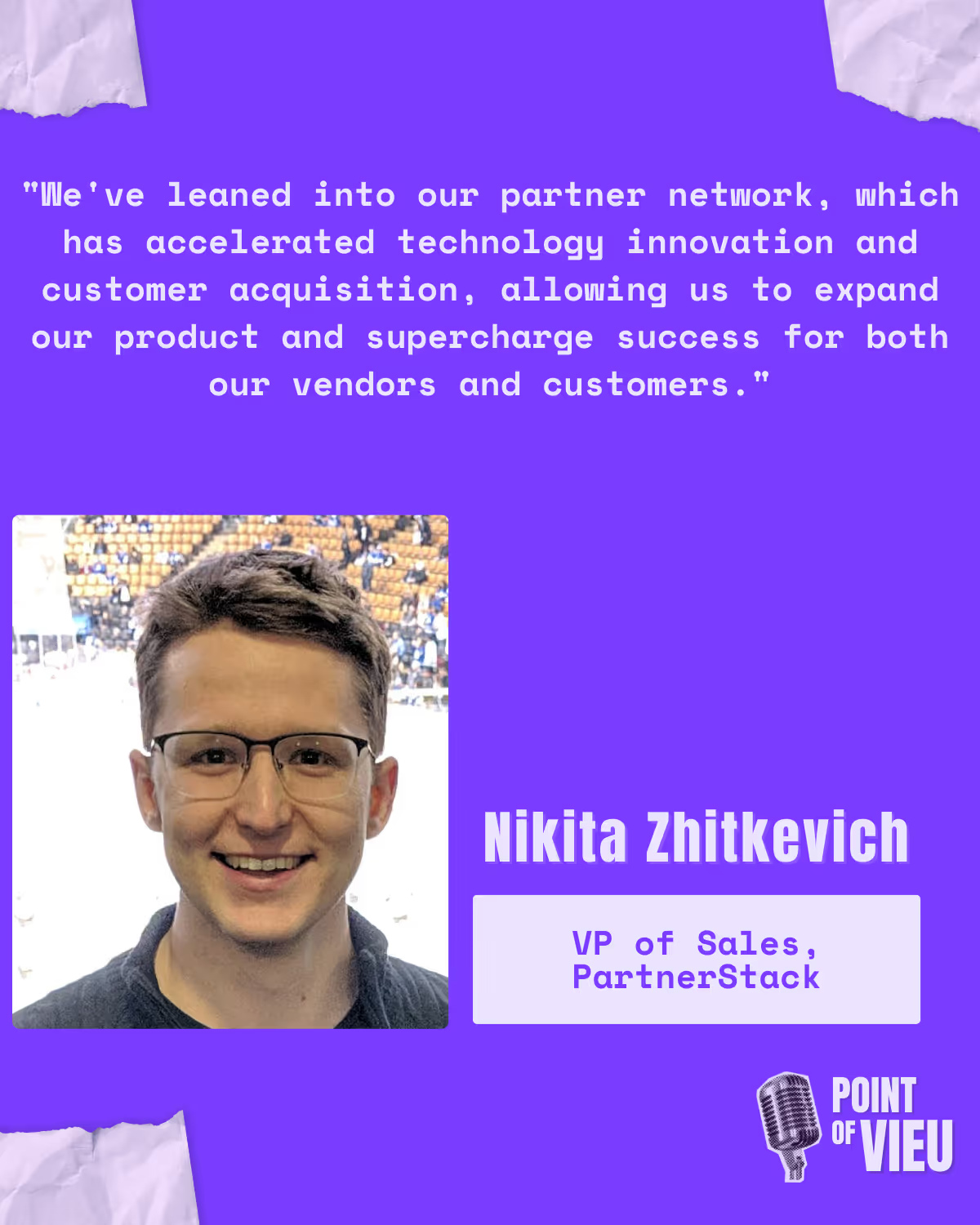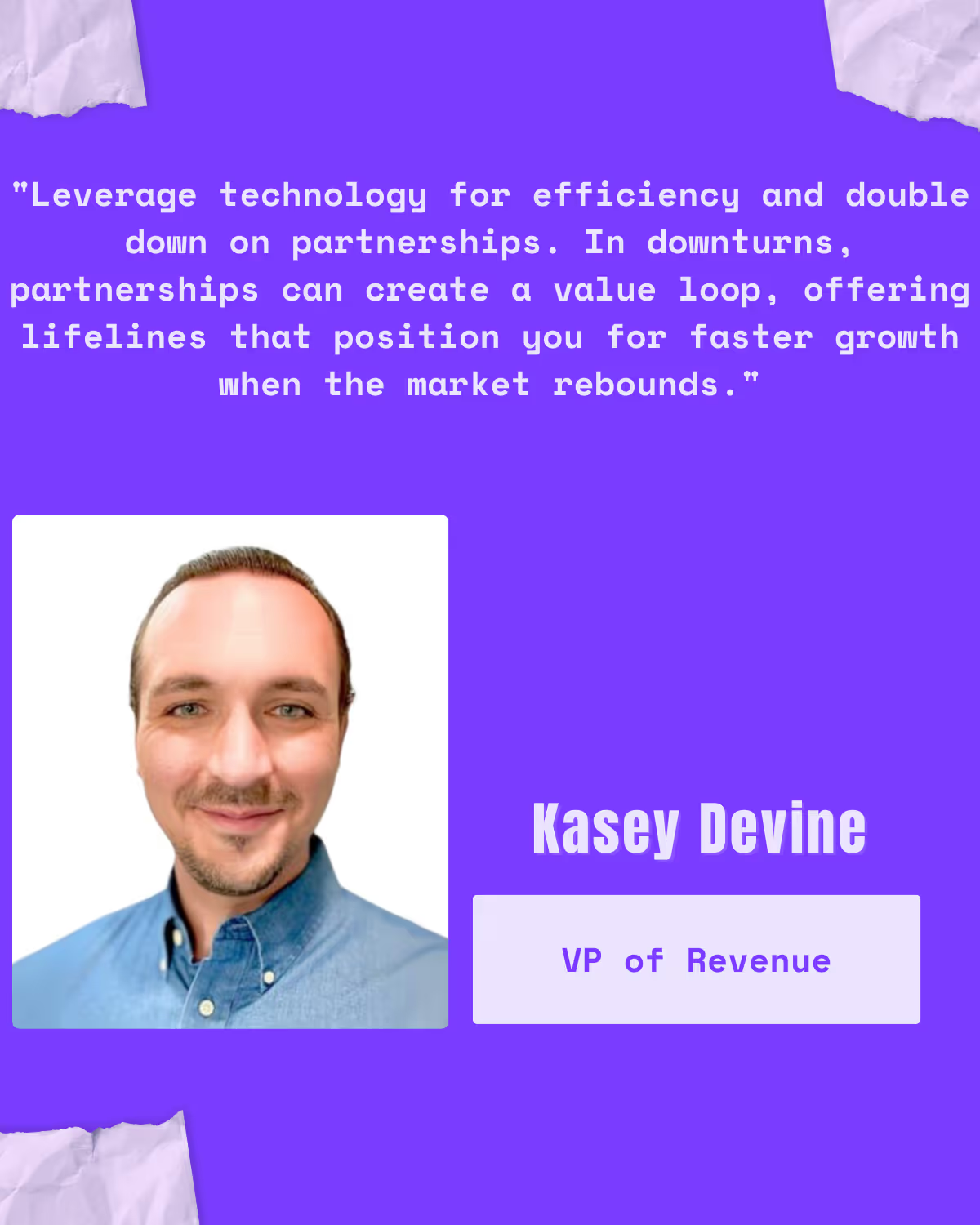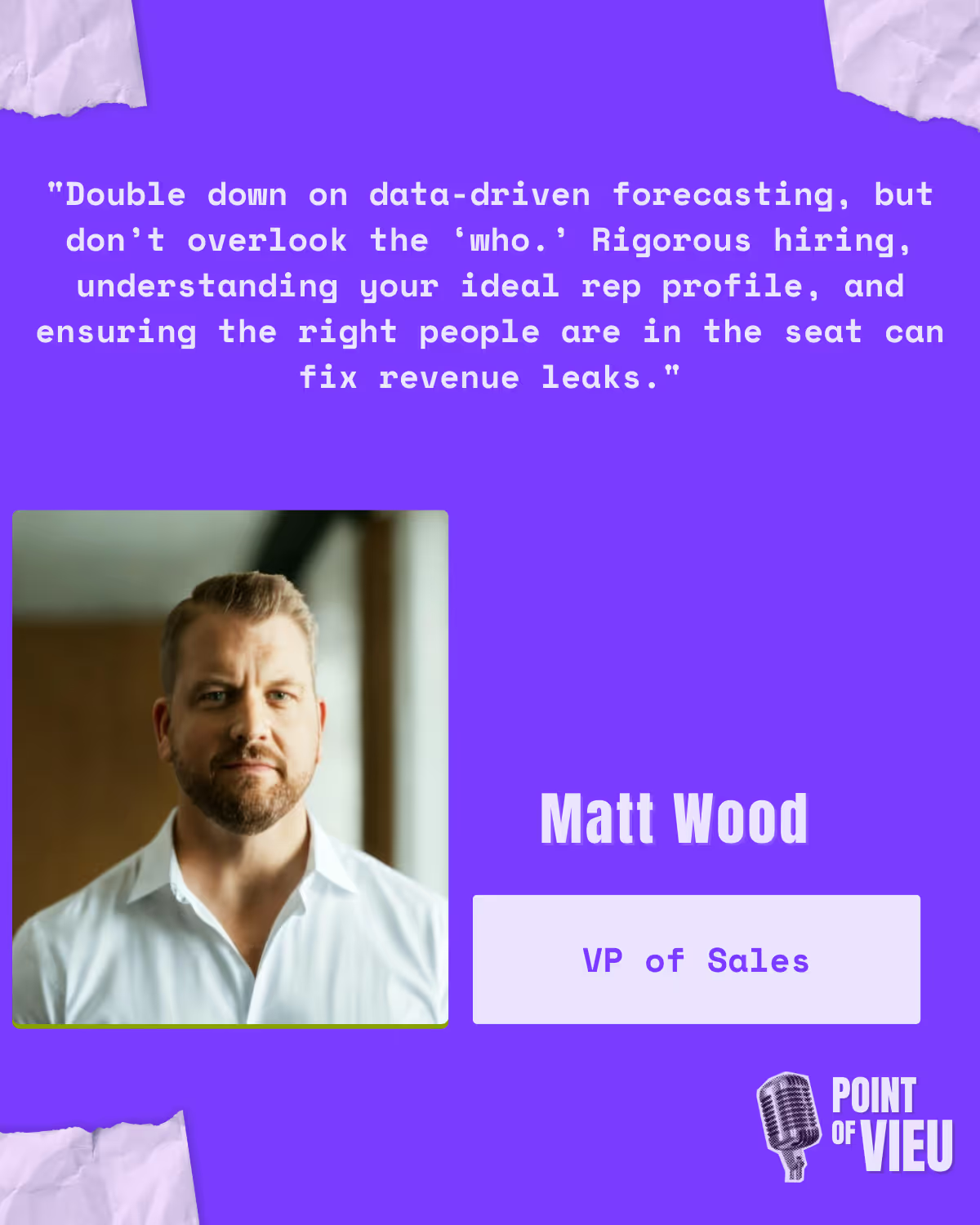Clari's Revenue Leak report reveals that 61% of companies missed their 2023 revenue targets, indicating a challenging market environment. This situation has prompted many businesses to rethink their approach to revenue attainment. Leaders now focus on efficiency, using technology more intelligently, and leverage strategic partnerships to meet their targets.
Experts have shared their insights on how they are taking proactive steps to improve revenue attainment and position their teams for success in 2024.
In the previous six episodes, we discussed the following:
Watch our experts answer the question: “What are you doing differently to improve revenue attainment?”
Nikita Zhitkevich, VP of Sales, PartnerStack

Nikita is the VP of Sales at PartnerStack, an organization dedicated to helping companies launch and scale their channel and partner programs across the board.
“2023, especially the second half, it was a tough time for everyone. Layoffs were up and purchasing and buying power were down for many organizations. We've come a long way since 2023, but it hasn't quite been the upswing we saw in 2021 and early 2022.
To help with revenue attainment, we've focused on the things we can control. Part of this has been making the customer buying experience easier by offering trial accounts. We aim to put as much in front of our customers as early as possible. We've also been very realistic about quarter coverage across our existing salespeople. If the coverage is there, that's great. If not, we quickly pivot to understand what's not working and address it.
Another strategy has been adjusting our outreach. If email and outbound efforts aren't generating responses, we might shift to an event strategy mid-year. We try to stay responsive to the market.
One of the biggest things we've leaned into is our partner network. We work with many partners who have established relationships and trust with clients. As a partner platform, we also have our own partner program, and relying on these relationships has helped accelerate both technology innovation and customer acquisition.
Going to market with our partners, whether they’re technology or agency partners, has allowed us to expand our product in unexpected ways. It’s helped acquire customers for both us and our partners, driving more value to the customer. By combining complementary tools successfully, we can supercharge the success of both our vendors and customers.”
Jeff Kirchick, VP of Sales, allwhere

Jeff Kirchick is the Vice President of Sales at allwhere, an IT asset lifecycle management software company based in New York City with approximately 45 employees. With 15 years of experience in software sales, Jeff has been a part of multiple successful exits.
In any business, you need to understand what bets you need to double down on and what new bets you need to make. I think of things in three phases, a concept I learned from Mark Roberge, the former CRO of HubSpot and a key figure in the science of scaling a business.
The phases are product-market fit, where you determine if you have something that can scale; go-to-market fit, where you achieve the unit economics that allow for more investment; and the scale phase.
In any business, if you're measuring effectively—like comparing your LTV against your CAC (customer acquisition cost)—and you have a ratio of 5:1 or greater, it’s a sign to invest more. This means adding resources, which will help drive more revenue. At the same time, you need to know what new bets to place.
I'm focusing more on moving upmarket to bigger, stickier customers. But you don't do this through empirical observation alone—you need to be data-driven.
At this point, there’s no excuse for sales leaders not to use some sort of conversational intelligence tool to gain insight into what’s happening in their conversations. In my business, we discovered that about 20% of our conversations involved customers asking for a geography we didn’t service. Now we’re going to start servicing that geography because it became clear that one in five customers were interested in it.
There are even tools, still relatively unknown, that can distill this data and use AI to inform product development. For example, based on call data and pricing, AI can recommend what your product team should be building. The available technology is remarkable. Sales leaders need to lean into these tools. If you want to unlock growth with your product or operations teams, the data is essentially handed to you now. It’s never been easier for sales leaders to advocate for unlocking growth opportunities within their business—the tools are all there, and there’s no excuse not to use them.
So, what I would recommend is using conversational intelligence, aligning it with product and operations, and ensuring buy-in across teams. It’s not just a sales tool; it’s a company-wide tool. Leverage the insights to determine what customers are asking for and where you can unlock growth as a business.
Kasey Devine, VP of Revenue

Casey Devine has spent the past 10 years in sales, sales leadership, and go-to-market leadership roles. His diverse experience spans multiple verticals, with a focus on SMBs, particularly in human resources, tech, and outsourcing services.
The two main focuses I've had to improve are quota and revenue attainment. The first has been leveraging technology, especially artificial intelligence, to be as efficient as possible before increasing headcount. I take headcount growth very seriously. The "grow at all costs" model from 2018 to 2022 is no longer applicable.
From a human perspective, sellers and those who support them are not just numbers on a spreadsheet. These are real people putting their careers on the line to help your organization.
As a leader, one thing I've done is ensure that if we hire someone in the current market, it’s necessary, and we will provide them with the tools they need to spend most of their time on revenue-generating activities. This ensures efficiency and limits the variables that could hinder success.
The second focus has been on banding together and winning through partnerships, whether through industry associations or business-to-business vendor partnerships. The stats from Clari indicate a downturn, especially in tech sales and startups.
If you panic during this period, you may miss valuable opportunities. Historically, downturns are the best time to enter a market from an investment perspective.
I approach it by recognizing that while the average company may not be performing as well as they would like, there is always something valuable to someone else. It’s worth leveraging that value in new ways to create a feedback and value loop.
This is why I recommend doubling down on partnerships, even if you haven't done so before.
Whether you’re primarily a product-led growth company or focused on outbound efforts, it’s worth finding two, three, or four aligned vendors with whom you can exchange business. These partnerships may serve as lifelines for both you and your partners.
If the interest rate environment improves and we return to a more growth-focused model, these partnerships will help you scale even faster because you’ll have built a network of allies.
Matt Wood, VP of Sales

Matt Wood has spent approximately a decade in SaaS, playing a pivotal role in scaling revenue growth across multiple organizations within DevOps, cybersecurity, and data observability. His efforts have driven revenue from below $1 million to over $100 million, contributing to four successful mergers or acquisitions.
“We're just doubling down on data-driven forecasting and pipeline management. So, any data that we can analyze and inspect to see where things are potentially leaking, making sure that we're looking at risks very early on.
But I think a lot of people also focus on “what” behind the process and opportunities but miss the who, which is who's in the seat, ‘How dialed in is your interview process?” “Do you know what your ideal rep profile is?’ Often you can fix revenue leaks or challenges of not hitting targets by looking at who is in the seat selling.
I think it's important to dive in, diagnose, and make sure that you are very rigorous about who you hire and why you hire them.”
Conclusion
Today's challenging market environment has made revenue attainment harder than ever. Leaders across the sales landscape are taking bold, proactive steps to ensure success. They leverage AI and data-driven tools to enhance efficiency and fix revenue leaks. These leaders emphasize the importance of strategic partnerships and building stronger relationships with customers. Their actions demonstrate that a multifaceted approach is essential for success in the current market.
Book a demo with Vieu to increase your revenue attainment.



